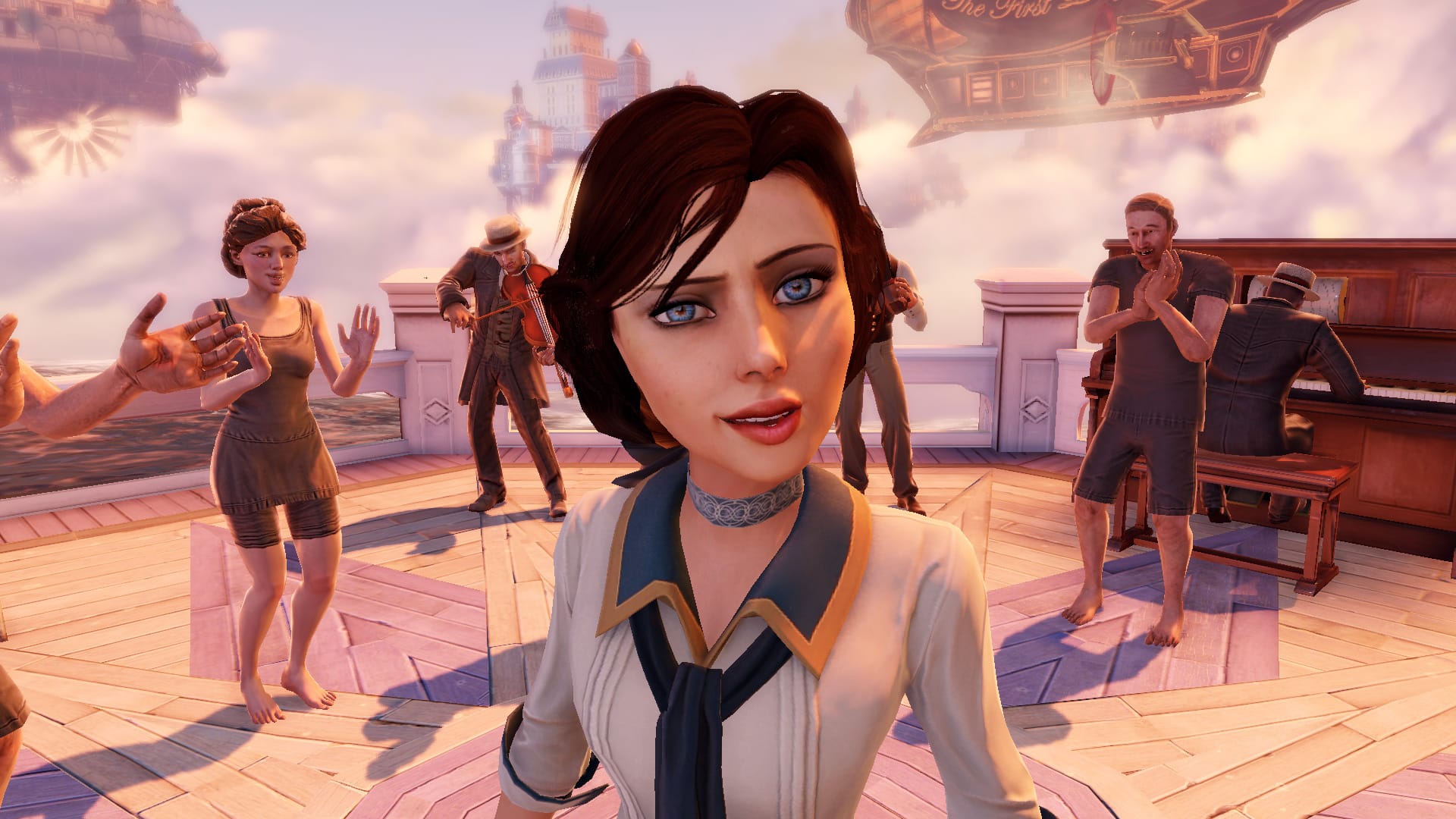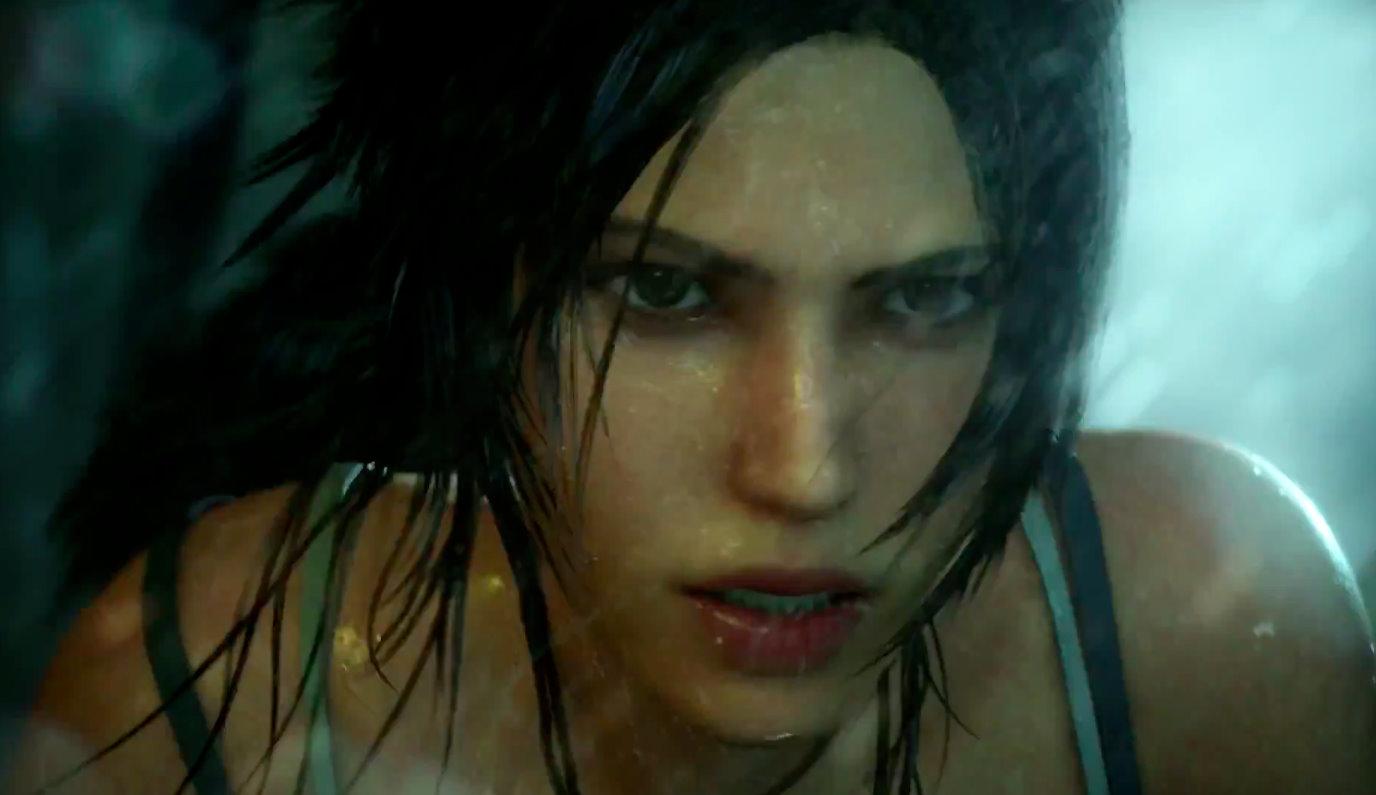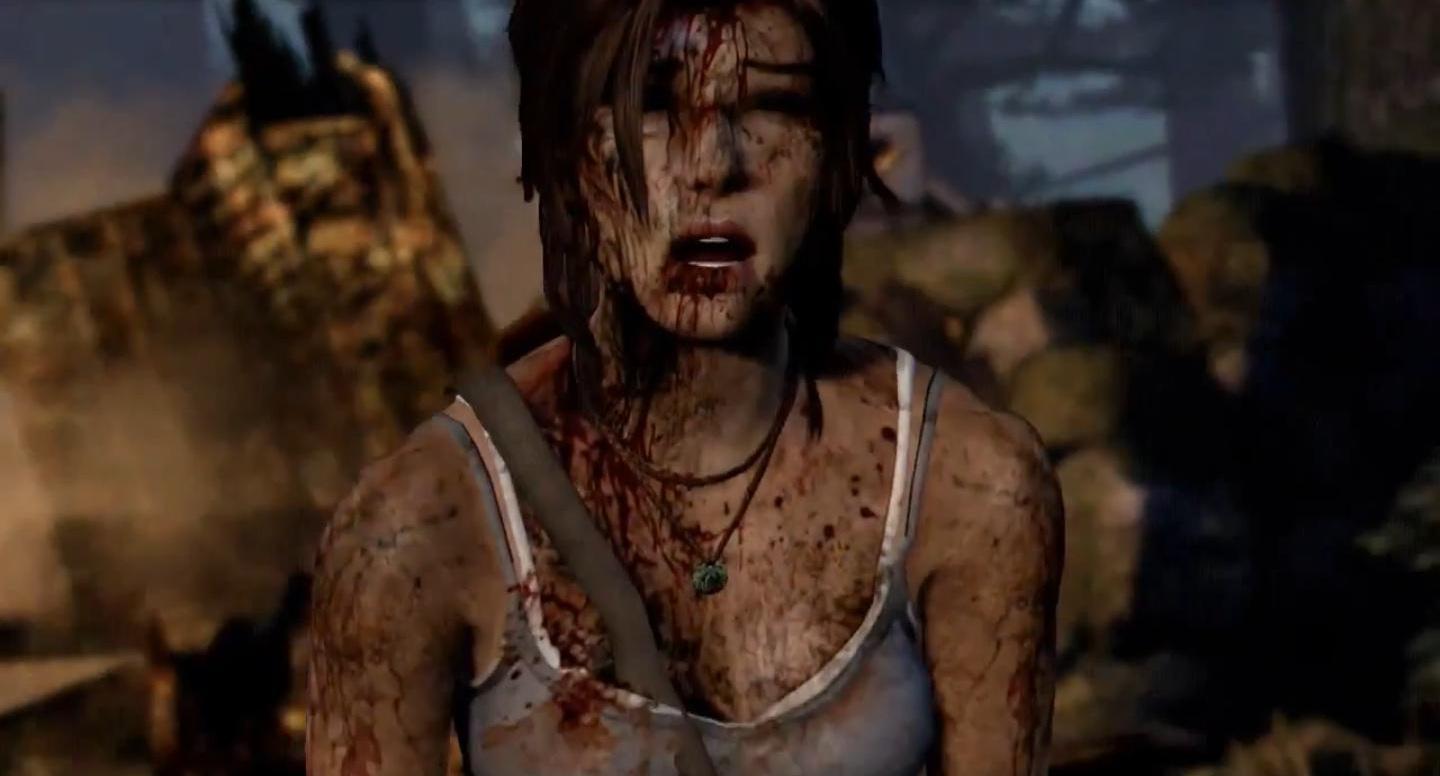You have to give it to Irrational Games - it's not easy to make a new instalment to a current generation franchise that is held so closely to many modern gamers' hearts. When the original game came to consoles six years ago, it completely blew the minds of players all around the world. The marvelous city of Rapture, lost deep beneath the ocean. The fantastic Plasmids, which gave us incredible supernatural abilities. Twisted, memorable characters. THAT plot twist. Irrational Games took a break for Bioshock 2, so in actual fact, Infinite is Irrational Games' true sequel - but how do you go about making a sequel to what is considered by many as a modern day masterpiece?
Bioshock Infinite takes place in 1912, and is set in Columbia, a fantastical city which floats thousands of feet above the rest of civilization below. You take control of Booker DeWitt, a former Pinkerton agent who is sent to the city above. Why? "Bring us the girl and wipe away the debt" is all he - and we - have to go on. The girl in question is Elizabeth, a young lady locked away in a tower by the city's leader, Comstock. Many of the citizens in this obscure city refer to him as The Prophet, but it's evident from his immediate antagonizing of Booker that's he something more in the vein of a dictator. It's not long before he sets the authorities on you for being what he brands the "False Shepherd", who has come to lead his "lamb" (that's Elizabeth to us normal people) astray.
Infinite's atmosphere is certainly a masterstroke. The first moment you catch a glimpse of Comstock's hovering haven, the brilliant music accompanying it (the soundtrack of the game stays superb throughout, too) as well as the game's gorgeous visuals are enough to put a tear into any art-lover's eyes. Actually setting foot into Columbia for the first time has a similar vibe; never have I felt so much like I was actually in the game world than I did with this. Irrational's design of the city is incredibly intelligent. The detail of every scene is simply jaw-dropping, and you'll never find two locations that look the same.
Infinite's atmosphere is certainly a masterstroke. The first moment you catch a glimpse of Comstock's hovering haven, the brilliant music accompanying it (the soundtrack of the game stays superb throughout, too) as well as the game's gorgeous visuals are enough to put a tear into any art-lover's eyes. Actually setting foot into Columbia for the first time has a similar vibe; never have I felt so much like I was actually in the game world than I did with this. Irrational's design of the city is incredibly intelligent. The detail of every scene is simply jaw-dropping, and you'll never find two locations that look the same.
From the offset, there's obviously a great deal of mystery surrounding Elizabeth, Comstock and the city of Columbia. Why is Elizabeth locked away? What's the deal with Comstock? Why is there a city in the sky? The fact that Irrational Games make you question so much from the very beginning really drives the narrative forward.
Elizabeth has a pivotal role in the game, not only in the plot but also in the gameplay. For the first few hours, you play as a lone-hero, but once you guide her out of the tower that she's been locked away in for so many years, that's when the real game begins. As far as videogame characters go, especially non-playable ones, she has to be one of my favourites. Ever. Whilst your exploring, looting and shooting, she doesn't need any protection at all. You rarely need to wait for her, and if you do need her, she'll be straight there. Sometimes she offers you Silver Eagles (the game's currency), and in moments of desperation she'll offer you health, ammunition and salts. The real thing that seals the deal is what makes Elizabeth truly unique in this tale: an incredible power which allows her to open Tears in the world. Tears are basically "windows into other dimensions" which means that Elizabeth can pull through items of use. During combat she can spawn you turrets, cover, weapons and all manners of things. It isn't really all of this that makes her so great, though. It's the relationship that you as Booker share with her which unravels into something simply marvelous before the game's climax. Director Ken Levine has always been fantastic when it comes to story-telling and character developing, and Infinite is no exception to this. Her abilities are quite simply the icing on top of an already delicious cake.
 |
| Elizabeth's character is as colourful as her design. |
Salts are effectively your ammunition for supernatural powers called Vigors. Despite the name change, Irrational do nothing to hide the fact that these are pretty much the same idea as the original game's Plasmids. Although a couple are borrowed from the first game, they've still had a beautiful graphical overhaul, and there's no forgetting the countless other abilities. Bucking Bronco launches enemies into the air, Murder of Crows swarms them with - you guessed it - crows, and Shock Jockey zaps them with a bolt of electricity. There are eight different Vigors to be obtained throughout the course of the game which creates a whole host of combinations. Infinite rarely ever encourages you to use variety (you could complete the majority of the game using only a handful of Vigors and weapons), but the option for spicing combat up is certain there.
Then, of course, you have your guns. The left shoulder button is responsible for Vigors, so the right one controls your weapons. Each different gun - from standard pistols to gatling guns and rocket launchers - is incredibly satisfying, and pairing them up with the brilliant Vigors makes most combat situations a bundle of chaotic fun. What could possibly make it better? Oh that's right, the Sky Hook. Columbia's main travel system is a set of rails that follow the winding city. The Sky Hook is a contraption that fits onto our hero's hands. You'll use it for fast-navigation between locations - but we're not the only ones who get to use them. Many enemies throughout the game have them too, and so there's a few scenarios in the game where you can fully utilise the rail in combat situations. Whether it's whacking your opponents down to their doom, launching yourself off the rails at them or simply using it as a melee weapon in close-quarters combat - the satisfaction is always there. It makes for some pretty gruesome animations, too.
Now that we've mentioned enemies, we're onto Infinite's only real downfall. Although the game is packed with many different enemy types, it just feels slightly too forced. The designs are rather cool, but rarely exciting. The Fireman is your typical bomber-type enemy. Patriots are essentially walking turrets. The Handyman feels like a deliberate, unsuccessful attempt at replicating the sinister Big Daddy, and have one of the silliest, most BLATANT weakspots I've seen in a video game. The disappointing Boys of Silence only appear on occassion - but did provide me with the one true scary moment of the game. Luckily, there's one foe that really does excite. The Songbird is a mechanical winged creature that is supposed to keep Elizabeth in the tower, and as a result of Booker breaking her free, strikes back at the pair various times throughout the story. I won't go into too much detail so it's fresh when you play it yourself, but the Songbird provides some of the greatest moments in the game.
It's very hard to express how special a game Infinite is. There's so many little factors in the game that add up to its brilliance that it's hard to pin down a single spectacular factor - but if I had to, I'd say its the ending. Whether it can be called a twist or not is beyond me, but it hit me so hard and left my jaw hanging so low that I simply had to restart it straight after. It's complex, incredibly clever and one of the best endings to anything ever, in my eyes. It also brings the series to a point where I fail to really see why they would make any more instalments. I look forward to the impending DLC, but I like to think that the genuises at Irrational Games have a new original franchise up their sleeves for the next-generation. They've certainly proved themselves as masterful designers on this one - and what better way for them to say farewell to this generation with one of the console's finest games?
 |
| "John, I told you not to scratch with your Sky Hook!" |
Now that we've mentioned enemies, we're onto Infinite's only real downfall. Although the game is packed with many different enemy types, it just feels slightly too forced. The designs are rather cool, but rarely exciting. The Fireman is your typical bomber-type enemy. Patriots are essentially walking turrets. The Handyman feels like a deliberate, unsuccessful attempt at replicating the sinister Big Daddy, and have one of the silliest, most BLATANT weakspots I've seen in a video game. The disappointing Boys of Silence only appear on occassion - but did provide me with the one true scary moment of the game. Luckily, there's one foe that really does excite. The Songbird is a mechanical winged creature that is supposed to keep Elizabeth in the tower, and as a result of Booker breaking her free, strikes back at the pair various times throughout the story. I won't go into too much detail so it's fresh when you play it yourself, but the Songbird provides some of the greatest moments in the game.
Summary
It's very hard to express how special a game Infinite is. There's so many little factors in the game that add up to its brilliance that it's hard to pin down a single spectacular factor - but if I had to, I'd say its the ending. Whether it can be called a twist or not is beyond me, but it hit me so hard and left my jaw hanging so low that I simply had to restart it straight after. It's complex, incredibly clever and one of the best endings to anything ever, in my eyes. It also brings the series to a point where I fail to really see why they would make any more instalments. I look forward to the impending DLC, but I like to think that the genuises at Irrational Games have a new original franchise up their sleeves for the next-generation. They've certainly proved themselves as masterful designers on this one - and what better way for them to say farewell to this generation with one of the console's finest games?
9.5/10







